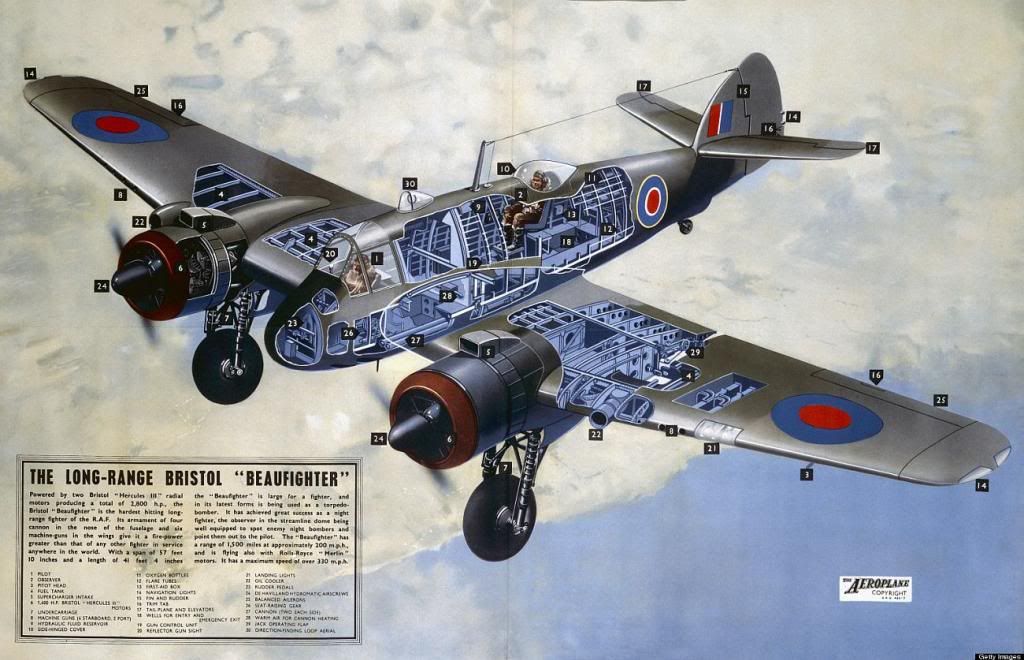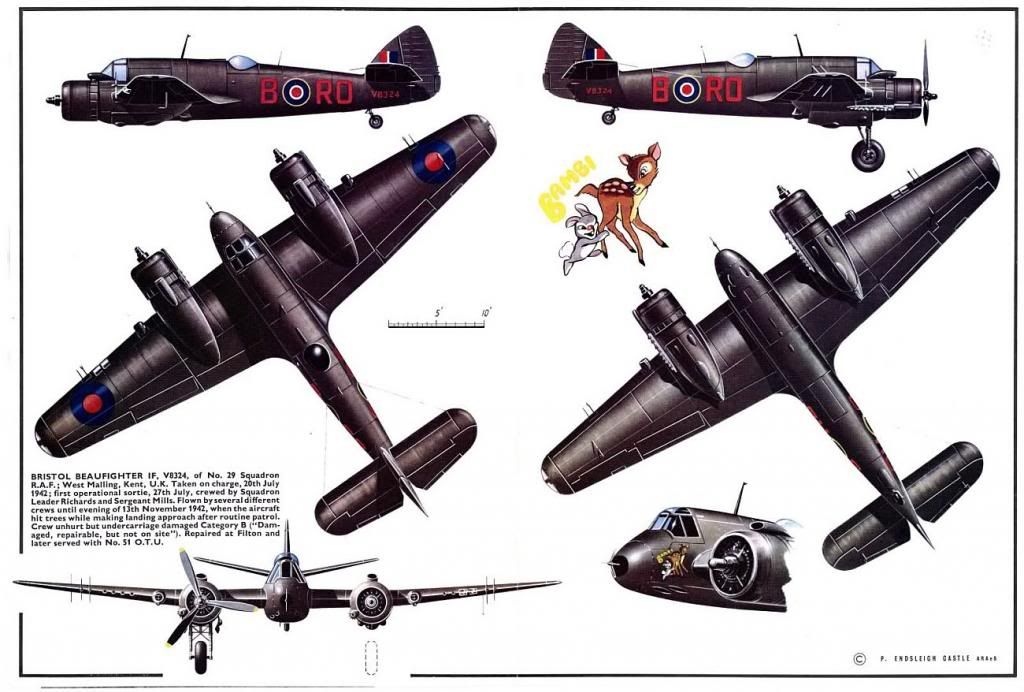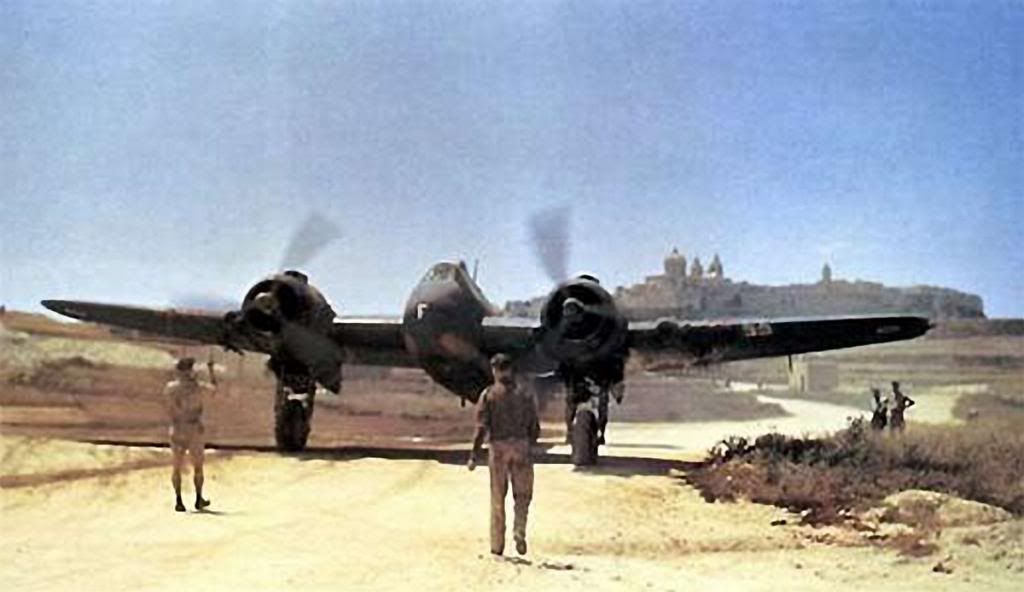- Joined
- Oct 11, 2010
- Messages
- 12,704
- Reaction score
- 7,458
- Age
- 61
The Beaufighter was a two-seat all-metal fighter using components from the Beaufort torpedo-bomber. First flown on July 17 1939, the Beaufighter eventually equipped 52 RAF squadrons.-

Entry into Fighter Command service came during August 1940 with the Fighter Interception Unit at Tangmere. The following month, five squadrons received the Mark 1F equipped with Mark IV Air Intercept radar for night-fighter duties although the type's first kill wasn't until November of that year. The Beaufighter continued as a night-fighter until 1943, and the last aircraft (a TT10) was not retired from RAF service until 1960, nearly 21 years after the type's first flight.-
The first Beaufighter had twin Bristol Hercules III engines that each produced 1,400 hp. These gave the first Beaufighter’s a top speed of 309 mph. However, this was not considered to be overly impressive when the Hurricane, with a single engine, was faster. The designers had hoped for a top speed of 335 mph from the Beaufighter. Therefore, the original Beaufighter’s were not considered to be fighter aircraft but they were seen as being potentially very useful night fighters. They were fitted with the A1 Mk IV radar to enable the pilot to ‘see’ in the dark.-
By the end of the war, the Beaufighter had seen action in Europe, the Mediterranean and the Far East. Numerous variations were produced and the aircraft gained a very good reputation among those who flew it.-

Powerplant: Two 1,400 h.p. Bristol Hercules XI fourteen-cylinder air-cooled engines.
Span: 57ft 10in (17.62m)
Length: 41ft 4in (12.60m)
Max Speed:321 mph (518 km/h) at 15,800 ft (4,815m)
Armament: Four 20mm Hispano cannon in nose and six .303in Browning machine guns in wings.
asisbiz.com
raf.mod.uk
historylearningsite.co.uk

Entry into Fighter Command service came during August 1940 with the Fighter Interception Unit at Tangmere. The following month, five squadrons received the Mark 1F equipped with Mark IV Air Intercept radar for night-fighter duties although the type's first kill wasn't until November of that year. The Beaufighter continued as a night-fighter until 1943, and the last aircraft (a TT10) was not retired from RAF service until 1960, nearly 21 years after the type's first flight.-
The first Beaufighter had twin Bristol Hercules III engines that each produced 1,400 hp. These gave the first Beaufighter’s a top speed of 309 mph. However, this was not considered to be overly impressive when the Hurricane, with a single engine, was faster. The designers had hoped for a top speed of 335 mph from the Beaufighter. Therefore, the original Beaufighter’s were not considered to be fighter aircraft but they were seen as being potentially very useful night fighters. They were fitted with the A1 Mk IV radar to enable the pilot to ‘see’ in the dark.-
By the end of the war, the Beaufighter had seen action in Europe, the Mediterranean and the Far East. Numerous variations were produced and the aircraft gained a very good reputation among those who flew it.-

Powerplant: Two 1,400 h.p. Bristol Hercules XI fourteen-cylinder air-cooled engines.
Span: 57ft 10in (17.62m)
Length: 41ft 4in (12.60m)
Max Speed:321 mph (518 km/h) at 15,800 ft (4,815m)
Armament: Four 20mm Hispano cannon in nose and six .303in Browning machine guns in wings.
asisbiz.com
raf.mod.uk
historylearningsite.co.uk










































































































